Let the experts help you choose the type of power saw you are going to need for your next DIY project
Undecided on what type of power saw you need? Find out more to ensure you make the right choice

If you’re serious about doing DIY properly, you will need the right tools to do a good job. And choosing the right type of power saw for a specific task is no exception. Choose the wrong power saw for the job and you won’t get clean or accurate cuts.
However, there are a lot of different types of saw on the market, and a single power saw might not be enough to finish a DIY project. Realistically, a regular DIYer will need at least two saws, a circular saw and a jigsaw. However, a third may even be necessary. Here we look at the common options to help you decide what you need.
Types of power saw: Making the right choice
Do you need an all-rounder, or do you need a specialist saw? Do you need to invest in more than one power saw? We’re here to help you decide.

Thomas Oldham has spent the past four years using his expertise of working in the engineering and construction industry for over a decade to develop the UK Construction Blog - a leading online platform dedicated to empowering individuals and businesses in the construction industry.
1. Circular saw
A quality circular saw is definitely a power saw that you should seriously consider adding to your collection. The best circular saws are a great all-rounder and there is plenty of choice on the market at price points for all budgets.
Cordless models with a brushless motor are a better long-term choice, but there are good budget corded options like the Mac Allister 1500W from B&Q. It scored 4 out of 5 in Homebuilding & Renovating's Mac Allister 1500W circular saw review, making it a good choice for occasional users.
A handheld power tool, a circular saw, gets its name from having a circular blade rather than a straight blade. Thomas Oldham, Co-founder of UK Construction Blog, points out what it's used for, “It’s mainly used for making straight, accurate cuts in wood (such as MDF, OSB, plywood and other wood boards), though with the right blade, it can also handle plastic, metal, or masonry. If you’re building furniture, cutting sheet material, or trimming floorboards, a circular saw is one of the most versatile tools you can own.”
They’re useful for cutting worktops, doors, flooring, and decking, and allow for angled cuts, typically from 1-90 degrees. The depth of cut can vary from model to model and will depend on the size of the blade, but 60-65mm is common.
The blade on a circular saw plays a big part in how it is used, explains Oldham. “The main advantage of a circular saw is accuracy. The rigid blade resists flexing, which means you get clean, straight edges that can be joined edge to edge with very little finishing. When paired with a cutting guide, you can achieve professional-quality results without needing a table saw.”
Bring your dream home to life with expert advice, how to guides and design inspiration. Sign up for our newsletter and get two free tickets to a Homebuilding & Renovating Show near you.
The blades range in size from around 160mm to over 200mm, which helps determine the depth of cut. The bigger the blade, the deeper the cut. You can get wood blades, multi-purpose blades for cutting various materials, and diamond blades for masonry and tiles. The number of teeth, known as saw TPI, helps determine the finish you get. Typically, fewer teeth, like a 24T blade, give a rougher but quicker cut. More teeth produce a finer finish, but take longer to cut.
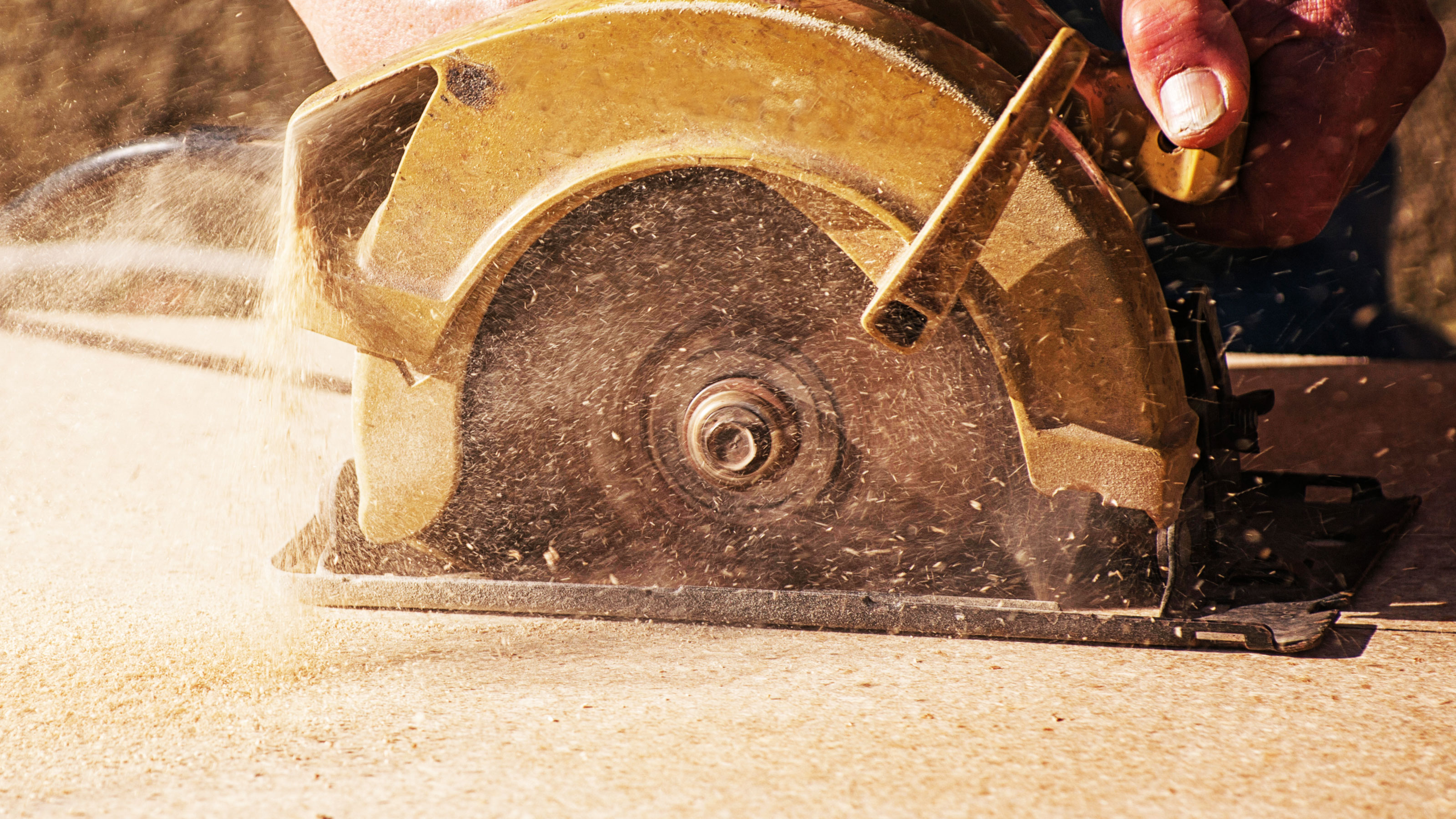
Try these circular saws for your next DIY project

A 190mm circular saw from the respected brand Makita. The tool has a cutting depth of 66mm for straight cross cuts and 45mm for angled cuts. Features a rear dust exhaust port and guide rail for straight cuts.
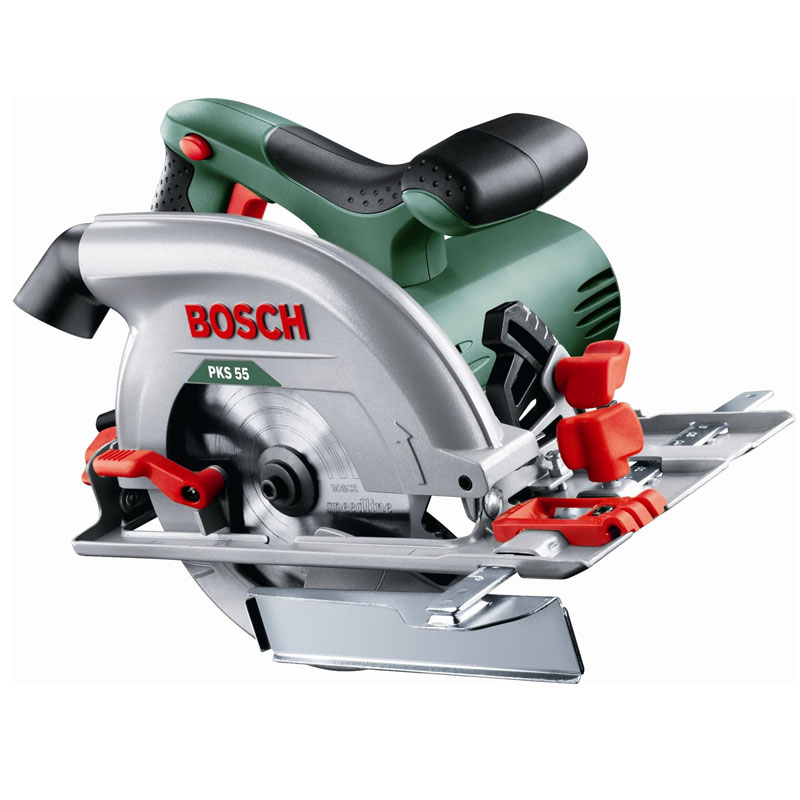
This circular saw comes with a smaller 160mm blade, which has a maximum cutting depth of 55mm. Still adequate for cutting boards, panelling and smaller studwork. Features an integrated spindle lock.

Scott Godfrey, with over 20 years of experience in carpentry, joinery, and leading large-scale construction projects, possesses the expertise and practical insights needed to provide authoritative commentary on power saws.
2. Jigsaw
If you are on the lookout for flexibility – and not just straight cuts – then a jigsaw is an excellent option for the job.
Scott Godfrey, carpenter and owner of Black Hammer, explains what a jigsaw is: “A jigsaw is a handheld power tool with a thin, vertical blade that can cut through wood, metal, plastic, and even insulation. It’s ideal for jobs that need curved, detailed, or non-straight cuts, such as fitting kitchen worktops, cutting sink holes, or shaping skirting boards.”
He adds, “The up-and-down motion of the blade makes it easy to control, allowing tight corners where a circular saw would struggle.”
They are available as corded or battery-powered cordless models, such as the Ryobi R18JS-0 ONE+ Jigsaw from Amazon. Corded models are typically cheaper, but don’t offer the flexibility of a cordless model.
To get the best cut, you need to choose the right blade, as Godfrey explains, “The blade you choose depends on what you're cutting. For wood, T-shank or U-shank blades with larger teeth make fast, clean cuts, while fine-toothed blades are suitable for metal or plastic. Coarser blades work best on thicker or rougher materials.”
He adds, “Blades also come as up-cut or down-cut, depending on the material and the finish you want. Using the correct blade keeps cuts smooth, prevents snagging, and avoids burning the material.”
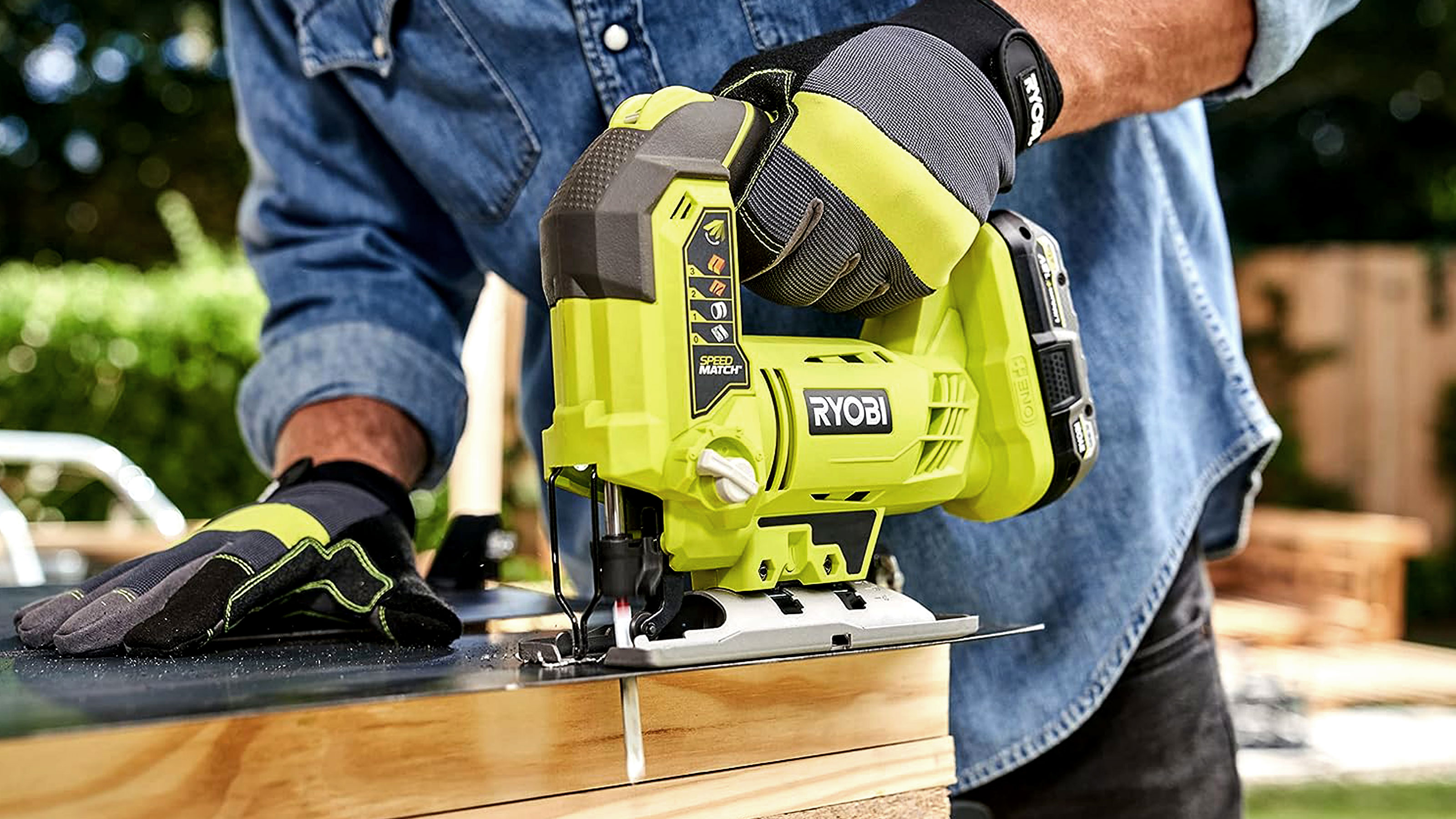
Try these jigsaws to cut curves on a project
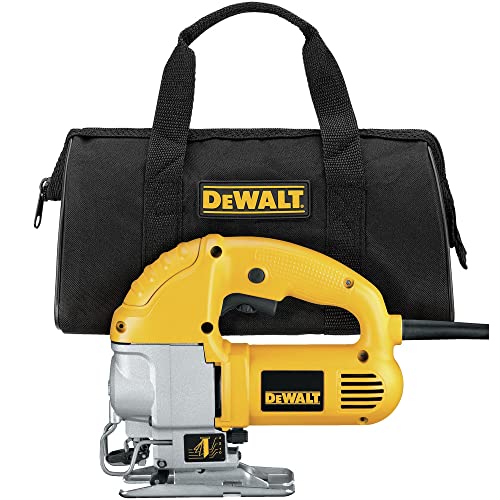
A quality corded jigsaw that boasts a powerful 5.5 amp motor for delivering clean cuts in many materials. The saw includes an all-metal gear case that provides superior durability and longevity.

A budget-friendly jigsaw that features a 550W motor, ideal for cutting through a wide range of materials. It has a max cutting depth of 65mm and a tool-less blade clamp, for quick and easy changes.
3. Reciprocating saw
If you want to rip through timber – or metal, plastic or masonry – then you need to think about investing in the best reciprocating saws. It is a multi-purpose power saw that trades and DIYers should have in their collections.
Reciprocating saws are very like a powered hand saw. They use a back and forth sawing action and are shaped with a handle at one end to grip and control and a shoe and blade as the front end. The blade is horizontal in line with the saw. Like most saws it is available in corded and cordless models like the WORX WX500.9 Cordless Reciprocating Saw from Amazon.
The blade is a key component of a reciprocating saw, you need to get the right one for whatever job you are tackling. For most jobs a multi-material general purpose blade will do the job, but if you're cutting masonry you want to get a specialist blade. You also need to check the number of teeth to define what finish you are going to get.
So what are reciprocating saws good for? They are a great choice for any job where a general purpose hand saw could be used such as demolition or remodelling jobs. They can zip through timber, nails and plasterboard. Beyond remodelling you can use it to cut sheets of wood board like plywood, OSB, MDF, saw through fence posts, garden bushes and trees, plastic pipe and metal.
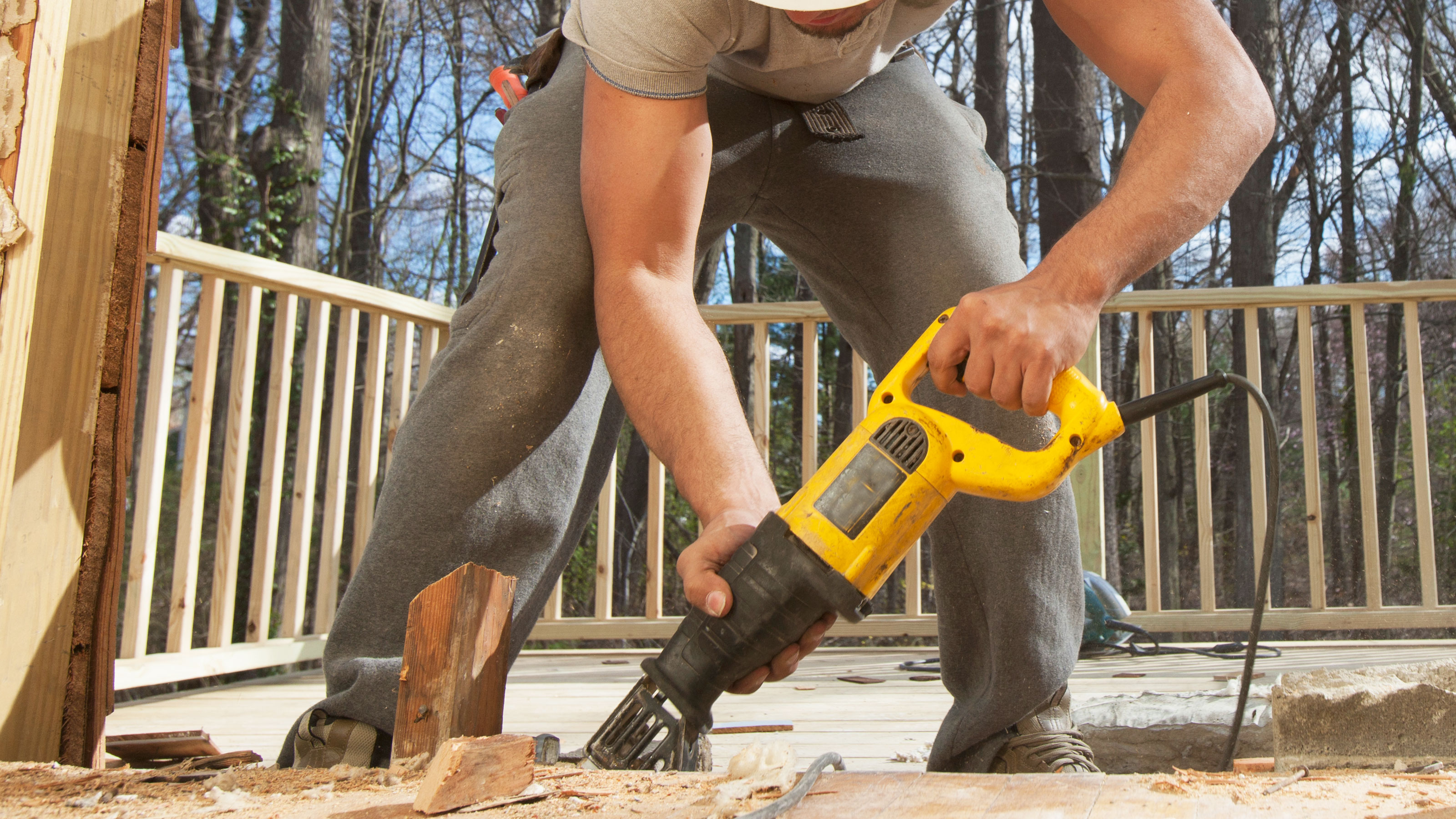
4. Mitre saw
If you need to make precise and accurate cuts on wood/composite/plastic then a mitre saw is the saw for the job. It is a fixed saw attached to a solid base that holds the material being cut and has a circular blade that is pulled down to make a cut. The saw can be moved and fixed into place to create neat accurate angles and bevels. This ensures that you are getting the same cut every time it is used.
This makes it ideal for cutting architraves, mouldings and skirting boards where precise angles and bevels are needed. It is also a good choice for cutting decking where a lot of cross cuts are needed.
Look out for a compound mitre saw like the DeWalt 1300W Corded Compound mitre saw from B&Q if you need to make a mitre cut and a bevel cut at the same time. Another variation is the sliding mitre saw that has a bar to allow the saw to move forward allowing for the accurate cutting of wider materials.
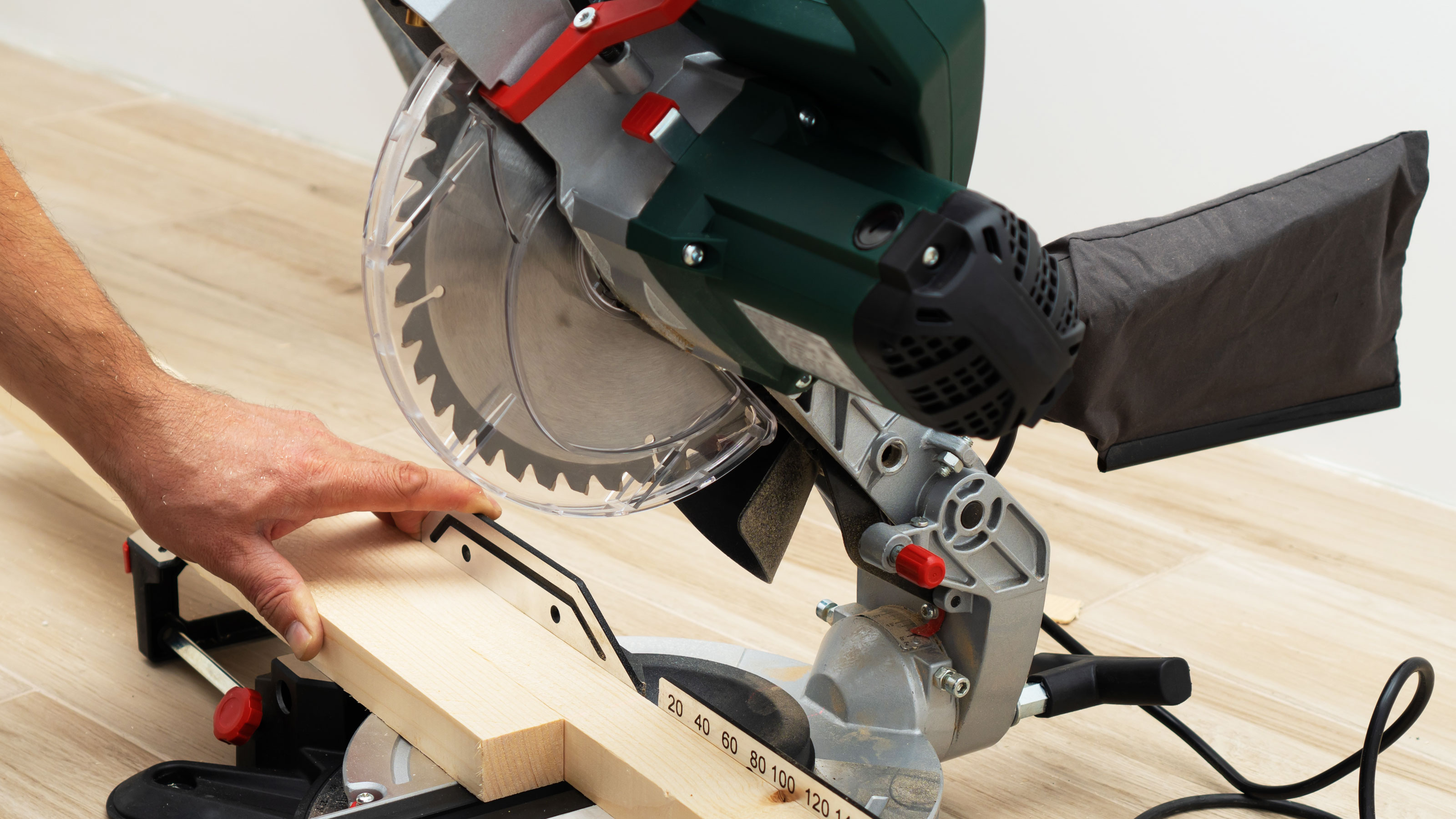
5. Table saw
This is a more specialist saw that is used to get more accurate cuts than a handheld tool. It uses a table – a large flat surface to place material on. A circular saw blade is secured in place and protrudes through the top of the table surface. A guide rail known as a fence can be moved to get the correct size cut.
The blade height and angle can be adjusted to allow for deeper cuts and bevel cuts. Common angles are 0-45 degrees, while you can typically get cutting depths up to 80mm.
Table saws like the Mac Allister 1500W Corded Table saw from B&Q are ideal for getting accurate straight cuts on long planks and sheets of wood. Its ability to change angles, makes them good for cross cuts on flooring and decking, mitre cuts on architrave and bevel cuts for skirting boards.

6. Chainsaw
A chainsaw is a power tool that is more suited for jobs where you need to rip through thick wood quickly. It uses a chain which is wrapped around a guide bar and powered by a small engine. The teeth of the chain have evenly spaced cutting teeth to rip through wood.
Typically, a chainsaw is used to cut through logs – ideal if you have a log burning stove – trees and bushes, but can be used on remodelling jobs where you need to cut through timber stud walls quickly.
To keep a chainsaw in tip top condition and working well you need to keep it sharp. Check out our How to sharpen a chainsaw guide to see what tools and techniques you need to get the job done.

FAQs
How much do power saws cost?
This depends very much on what type of saw you are looking to purchase and what brand, features and specs you are looking for. Cordless power saws with brushless motors are typically more expensive than corded power saws with brushed motors.
Here we have put together a table to give you a general guideline to what you can expect to pay for models at both ends of the scale.
Type of saw | Low | High |
|---|---|---|
Circular saw | £40 | £200+ |
Reciprocating saw | £50 | £200+ |
Jigsaw | £35 | £250+ |
Mitre saw | £50 | £500+ |
Table saw | £150 | £500+ |
Chainsaw | £50 | £300+ |
Power saws are a much-needed companion for a wide range of DIY projects, including how to build a stud wall, how to install decking and fitting a kitchen worktop
Steve Jenkins is a freelance content creator with over two decades of experience working in digital and print and was previously the DIY content editor for Homebuilding & Renovating.
He is a keen DIYer with over 20 years of experience in transforming and renovating the many homes he has lived in. He specialises in painting and decorating, but has a wide range of skills gleaned from working in the building trade for around 10 years and spending time at night school learning how to plaster and plumb.
He has fitted kitchens, tiled bathrooms and kitchens, laid many floors, built partition walls, plastered walls, plumbed in bathrooms, worked on loft conversions and much more. And when he's not sure how to tackle a DIY project he has a wide network of friends – including plumbers, gas engineers, tilers, carpenters, painters and decorators, electricians and builders – in the trade to call upon.

